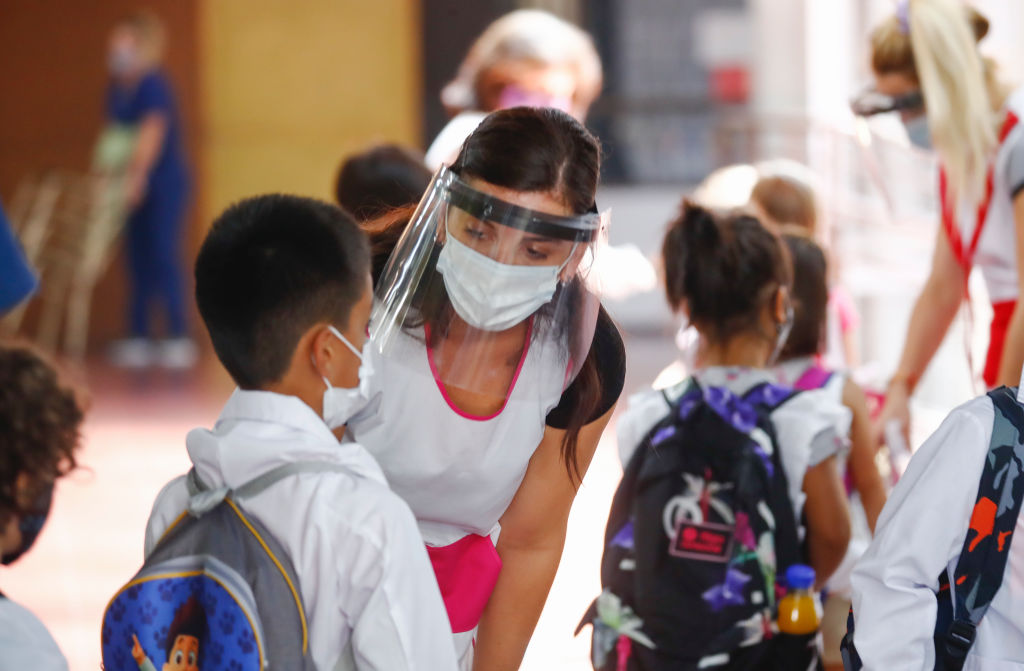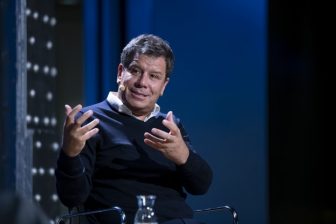Listen to a conversation with Eduardo Levy Yeyati on the Americas Quarterly Podcast
BUENOS AIRES – What a difference a year makes.
Twelve months ago, President Alberto Fernández saw his popularity soar to record highs as he guided Argentina through the initial months of the COVID-19 pandemic. Today, with the country struggling with a brutal second wave and a scarcity of vaccines, his approval rating has fallen by half. Meanwhile, the Treasury, shut out of international capital markets, has exhausted its short-run resources, including monetary expansion that pushed inflation from 36% in 2020 to an estimated 50% this year (well above the official 29% projection). Moreover, Argentines’ compliance with new COVID-related mobility restrictions is uneven, determined largely by political ideology and especially by economic considerations: High among permanently employed public sector workers; partial at best everywhere else.
This outcome was predictable for at least three reasons.
The first one is global: The so-called lockdown fatigue. As we showed in a recent piece, lockdowns are initially associated with a significant reduction in the spread of the virus, but this effect declines over time as the socioeconomic costs start to mount – even more so in countries with larger informality and more limited state capacity to mitigate those costs.
The second reason is local: The lack of fiscal support. With a heavy tax burden that is already fueling a hemorrhage of physical and human capital, no access to financial markets, a structural deficit partially contained through temporary reductions in public investment and a short-lived tampering with the social security actualization formula, Argentina’s government cannot afford to reenact the 2020 income support programs that helped attenuate the pain of the sudden stop in economic activity. A strict lockdown would be political kryptonite.
The third reason is conjunctural: This year, Argentina has mid-term elections. Who is going to enforce restrictions in a context of growing civil discontent further fueled by the scandal of VIP vaccinations and the perceived mishandling of the acquisition and rollout of vaccines?
Against this background, the last few weeks have witnessed an ongoing dispute between President Fernández and Buenos Aires Mayor Horacio Rodríguez Larreta over whether it’s safe to have in-person schooling. This debate is partly about politics, but it has deeper long-standing socioeconomic roots; its resolution may influence the course of Argentina’s politics and economy for many years to come.
Another brick
To begin, we need to emphasize that COVID-19 really has taken a severe toll on education, especially in Latin America. The World Bank estimates the global cost associated with the loss of 48 school days (the average for 2020) at 12% of global GDP in 2019. Latin America lost 174 days; Argentina, 185 and counting. The reader can do the math.
In fact, the real cost is probably even worse: The loss in terms of human capital — and labor income and productivity — is highly regressive. Take, for example, the three main factors behind the failure of remote education in most developing countries. Public school teachers — unlike parents — can choose where to teach, and prefer to do that in wealthier neighborhoods, where it is easier and safer; as a result, schools in richer zip codes are better equipped to switch online. Parental support, an essential complement during the pandemic, is typically stronger in middle- and high-income homes. Connectivity (tablets and bandwidth) is limited or largely absent in poor households. Thus, the compound effect may be devastating as much for equity as it is for growth.
When can we even begin to make up for this loss in learning? Probably never. The lost ground in primary school will feed back into the existing reading comprehension deficit, in turn a key factor to explain the large dropout ratios early in secondary schools: A child’s literal and figurative distancing during school closures has already led to abandonment that many experts expect to be permanent. Make no mistake: We are facing a future with more people outside of whatever is left of the formal economy.
School of rock
The fight over schools is, of course, a political one.
By mid-2020, when it was clear that the government had no protocols to reopen schools and no plans to enhance remote learning (through teachers’ reskilling, technological upgrades and improved hardware), several groups of parents started to organize and call for schools to reopen. The arguments focused on education as well as on the psychological toll that at-home learning was inflicting on their children.
The movement was first snubbed, then panned, and finally confronted by a coalition of government officials and teachers’ unions favoring school closures, and came to the forefront when, merely weeks after a cautious reopening, an unexpected presidential decree re-introduced the school lockdown in the Buenos Aires area starting on April 19. The decree was legally and successfully challenged by Larreta, but the Supreme Court ruling against the closure was in turn disregarded by the government, which even hinted at a “soft coup.” Today, most Buenos Aires schools are open but remain hostages of an escalating political confrontation.
It would be a mistake to see this conflict purely as an education debate. At a time in which a largely token opposition lacked an appealing message — and appealing candidates — education became a political banner for families that have been so far politically underrepresented. The growing middle class of independent and semi-formal workers are the clear losers in a segmented society where formal workers are protected by unions and, through direct employment or job retention programs, by the state, and low-income households are referenced in social organizations that benefit from a widening net of social transfers.
These new middle-class outsiders — particularly, the women among them — are the leading actors in a pro-school campaign that is as much about education as it is about the everyday lives of overburdened and often precarious workers — pretty much as in the United States, where both President Joe Biden and Vice President Kamala Harris highlighted the need to align school and work schedules.
More importantly, these families are the pool of voters that the opposition cannot afford to alienate if it wants to return to power in 2023. Kids may not vote, but parents are taking notice.
Be true to your school
While the rebellion is not entirely about education, it is at least partially about it. And it should be used to also reopen and energize the long and overdue debate on education reform.
When in a recent Americas Quarterly podcast, Brian Winter asked me about Argentina’s education response during COVID-19, my answer was brief: We didn’t really have one. This is one of the most valid education-driven arguments of the pro-school movement: one year has passed and there is almost no online content, no updated laptops, no enhanced connectivity access, no teacher training — in short, no visible policy action or resource reallocation beyond the facile stay-at-home motto. With a few privileged exceptions, the quest of many teachers to make up for those limitations with what they had at hand was deemed to failure from the start.
In this light, this debate cannot be more welcome. To begin with, a combination of investment in connectivity, tablets, online content and teacher training should be a necessary condition to implement the hybrid (offline-online) education that should complement traditional classes to bridge the gap between poor and rich schools — today as well as in the post-pandemic. By adding longer effective hours and direct access to the best materials and classes in the cloud, an integrated hybrid curriculum seems our best bet to mitigate the deep inequality of educational resources in many developing countries. What better trigger to embrace this change than the forced home schooling brought by the pandemic?
Similarly, a stronger emphasis on labor-oriented secondary and tertiary education should be critical to reducing the skill mismatch between education and work and rise the employment rate among young people that ultimately fall through the net. What sounder policy to bring back the kids that dropped out of formal education –- even more than usual–displaced due to the lockdowns — than vocational training and reskilling?
One thing is for sure: The damage is done. The reopening of schools may stop the bleeding, but without an audacious new round of pro-education policies, the wound will not be healed.
—
Levy Yeyati is dean of the school of government at Torcuato di Tella University in Buenos Aires and a member of AQ’s editorial board.






